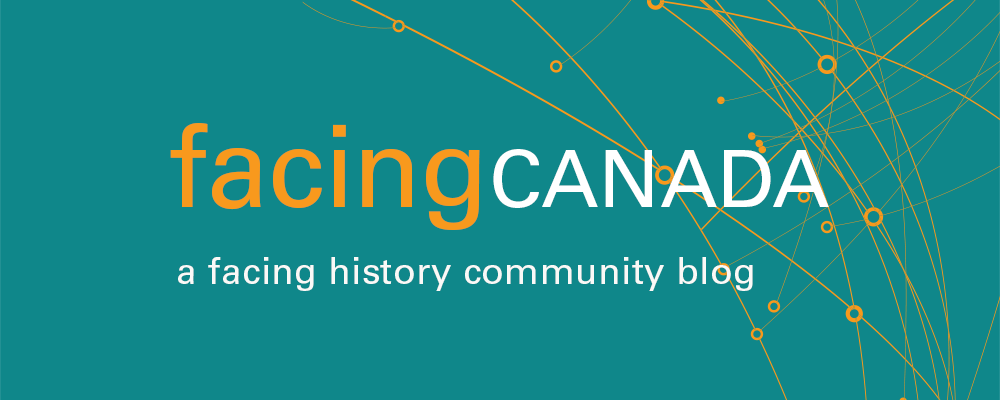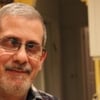Our group spent a good bit of time walking around Warsaw and seeing its sites. The first thing to realize about Warsaw is that it is an old looking but newly constructed city. Our guides said that the Germans destroyed at least half the city when they captured it in 1939. The destruction of the Warsaw Ghetto in 1943 after the suppression of the Rebellion accounted for 10 per cent more destruction and the failed uprising of August - October 1944 destroyed another 25 per cent and depopulated what had been a city of 1.3 million. We saw a film of the destruction in the Museum of the Warsaw Uprising and the visual record is a stunning one. Entire neighborhoods were obliterated and less than 1000 lived amidst the rubble. Two hundred thousand Poles, some of them Jewish survivors of the Warsaw Ghetto Uprising, lost their lives--many simply shot randomly on street corners (marked throughout the city).
Yet this Museum's narrative of the Uprising leaves as many questions as it answers. In its presentation of the causes for the Uprising, the museum hints at, but does not directly confront, (despite voluminous evidence available when the Museum was being built, and other exhibits that clearly tell the story,) the extent to which the AK commanders were influenced by Communists to begin a rebellion in the false hope that the Russians who were closing in from the East would intervene. Instead the Russians stood on the east side of the Vistula River running through Warsaw and watched. (This was all part of Stalin's plan to wipe out the Polish leadership to allow for a smooth Communist takeover, a process that had begun 3 years earlier at Katyn where 20,000 Polish officers, a considerable number of who were Jewish including the Army's Chief Chaplain, were massacred by the Communist Party. The Museum mentions both of these events but does not clearly link them. It is almost eerily ironic that President Kacynski, who was responsible for establishing the Uprising Museum, died in a plane crash on his way to an official commemoration of Katyn.)
Moreover, the Jewish role in all these events is minimized spatially and in the narrative of the museum. Yes, the ghetto's existence is acknowledged and the Rebellion is documented but it is located in a tiny corner on the basement floor. Is this deliberate? I don't know but I felt offended. I was also upset that no exhibit or recorded guide even asked if there was a relationship between the Warsaw Ghetto Uprising of 1943 and Warsaw Uprising of 1944. Many historians have raised the question of how Poles viewed the remnants of the ghetto population holding the Germans at bay for 28 days. Even leaving out the issue of antisemitic stereotyping ("if the Jews, helpless as they are, can do this, can't Poles?") the issue needs to be addressed. Ditto for the whole controversy on how much support the AK gave the ghetto fighters. What conclusions can I draw from all these observations? I think that visitors will certainly come away with an understanding of this watershed event in Polish history, but they will still be confused as to the outcome of the Uprising and how this affected Polish history especially in light of the subsequent Communist takeover between 1948 and 1989. As it is now, the Museum portrays the Uprising almost as a standalone historical event; a great deal more context is needed to address it fully.
Thus the Uprising Museum left me cold and with the feeling that here was yet another example of how, even in the 21st century, when this Museum was conceived and built, there were some who want to separate the Polish and Jewish narratives of Polish glory and valour. But then the Schindler Factory Museum dates from the same era and it--as I noted earlier--depicts the Nazi occupation of Krakow's effect on the entire city population (both Jewish and Gentile) seamlessly. Which museum truly best represents the New Poland's narrative? I don't know.
All these comments are part of a general concern about how museums are designed to present history. Of the three museums we visited, this one concerns me the most. I wonder what Poles—who packed the Museum when they were there and were extraordinarily attentive to every detail of the exhibits—will learn about their history? Is it important to know that there are some clear links between the Warsaw Ghetto Uprising and the August Uprising a little over a year later? How will they perceive the former Communist government given its apparent complicity in inciting an uprising that Stalin intended to use as yet another way to murder Poles? All these issues and the contrast between the styles and approaches of the various museums we saw in Poland make me think hard about the role of museums in promoting and perhaps propagandizing legacy and memory.
This museum also raises the disturbing question of “comparative suffering” among Poles which is intrinsic to an understanding of what our hosts rather euphemistically call “Polish Jewish relations”. At the heart of this whole issue, (as evidenced by the firestorm of argumentation catalyzed by Jan Gross’ Neighbours,) is the issue of why Poles did not want to discuss their role in the Holocaust. One of our speakers at Jagellonian University, Professor Mach, explained that Poland viewed itself as the “Jesus Christ of nations”. Quite understandably:. Twenty percent of its population was murdered during the war, its intellectuals were targeted for decimation, Poles were slotted for a role of servitude to the “Aryan super race”, and cities were left in ruins. Mach argued that to acknowledge the tragedy of the Holocaust would “force Poles to share their martyrdom.” The professor also mentioned that the Church was still not interested, at the local level, in supporting dialogue with Jews.
This explanation may help explain why the Museum minimizes the role of the Jews. But it can also be understood in another way. A number of surviving fighters from the Warsaw Ghetto Uprising fought alongside the AK (the Polish abbreviation for the Home Army who led the Uprising) in its uprising little more than a year later. Since the Warsaw Uprising of 1944 was a key episode of Polish national pride, why distinguish between Poles of Jewish descent and others who fought for their country?
The other part of the museum that concerns many is that it never explicitly mentions that the Uprising failed. Instead, it highlights the successes of the rebellion and the bravery of those who fought in it. The English language commentary I listened to made it clear that the Uprising began even though only 10% of the 50,000 AK (Home Army) soldiers were armed. But perhaps that is not the point. Do we emphasize the failure of the Warsaw ghetto uprising or the fact that resistance took place? All this will make me more interested in planning a Memory and Legacy unit Final Product that will ask students to design one room in a Holocaust museum. They will have to select the appropriate part of the Facing History and Ourselves Scope and Sequence, the key theme they want the room to teach, and select artifacts and write captions that will help the audience to grapple with issues. It will be interesting to see how students mix images, oral accounts, videos, and traditional artifacts with architecture to convey their understanding of legacy and memory. I will use some of my experiences with these museums to show contrasting ways of approaching legacy and memory.

